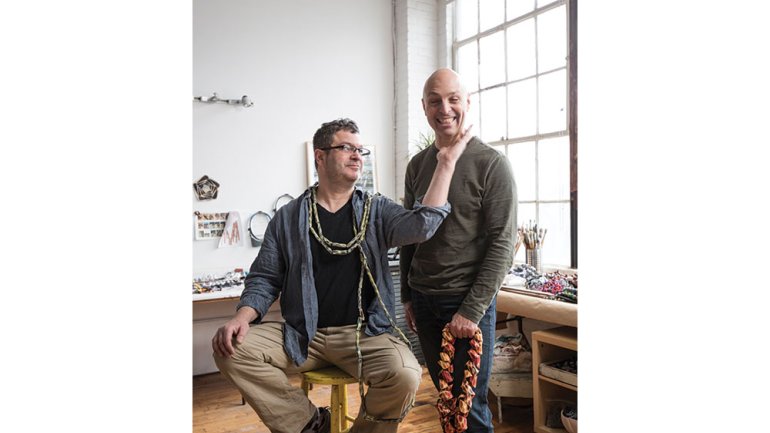Go, Team
Go, Team
Occasionally I find myself watching one of those HGTV shows where a couple is hunting for a new house. Too often for my taste, one partner dismisses the other’s wishes. He really wants a workshop in the garage; she says, “That doesn’t matter. I don’t care about that.”
That gets me worked up – and talking back to the TV: “Hey, you boneheads,” I say, “if you’re committed to each other, you need to be committed to what the other wants.” The way I see it, if you and I are in a partnership, I need to be concerned with your well-being, with mine – and with this mystical, malleable organism called “us.” If you yearn for a workshop and I blow it off, I weaken us.
I thought about this as we launched this issue devoted to teamwork. Some of the most interesting craft today is made by artists working together. Lisa and Scott Cylinder have collaborated on life and jewelry for 28 years. The two of them are a mix of highly developed skills, openness to input, and stubborn tastes. They can’t agree on music, so the studio iPod is always on shuffle. Yet they share a sketchbook and start a new project only when it resonates with each of them; it “has to click for both,” Scott says.
The whole of the Cylinders’ alliance is greater than the sum of its parts. That’s true, too, of David Forlano and Steve Ford, creative partners for 32 years. Forlano’s approach is straightforward, experiential, while the analytical Ford sees layers. “My approach to making paintings or objects is that what you see is what it is,” Forlano says, “whereas Steve has this wholly different way – intellectual, wanting to know how the thing is made, decomposing it. That carries over into our business structure, too. It’s a good balance.”
Sometimes, of course, a partnership fails, no matter how well intentioned it is. In this issue, we dissect the 2009 merger of the Museum of Contemporary Craft with Pacific Northwest College of Art – and the recent closing of the museum, a 79-year-old institution. One thing that’s clear about this ill-fated marriage – and not everything is – is that the two partners never really came together; they never achieved “us.” “We never had something where the cogs all fit together to create a real system,” says Namita Gupta Wiggers, former director of the museum.
Other times, a partnership can weather a storm and emerge stronger – and not through the sort of dreary compromise you see in the home improvement shows, where the wife grudgingly agrees to the workshop if she gets something in return. In 2005, when Forlano moved from Philadelphia to Santa Fe to be with the woman who’s now his wife, Ford felt lost. “I thought the daily interaction was key to our collaboration,” he recalls, “plus I felt abandoned.” With the help of a mediator, the two forged a new way. Now they’ve found that working in different cities actually enhances their work. There is “more time to let the ideas individually mature,” Ford says.
Teamwork is made of openness, complementary strengths, and commitment. It requires taking others’ concerns to heart – and trusting them with yours. It’s not easy, but as the artists in this issue demonstrate, when it works, it’s powerful.




